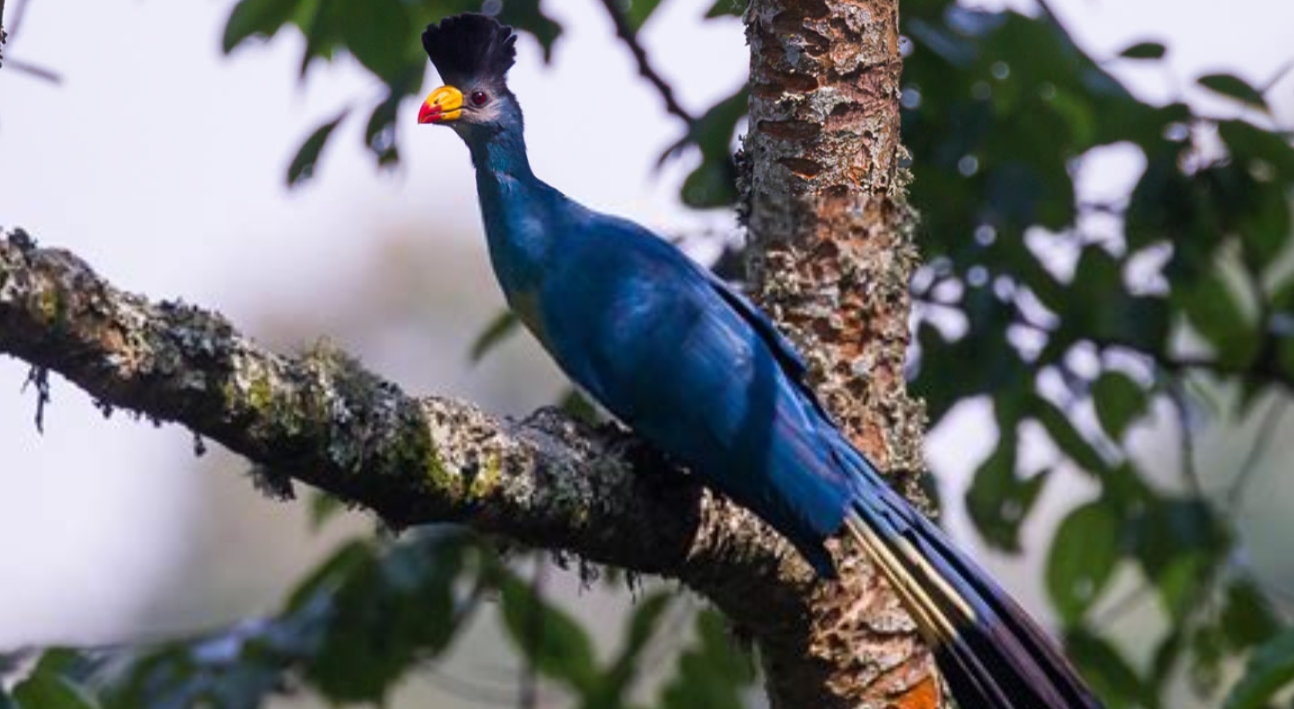
Locations of Birding Photography in Uganda
Locations of Birding Photography in Uganda: Featuring more than 1,000 birds, Uganda is one of the few African countries that makes a substantial contribution to the global bird population. As such, it is a paradise for ornithologists, bird enthusiasts, photographers, nature lovers, and researchers from all over the world. With a variety of birdwatching spots, including the UNESCO World Heritage Site Bwindi Impenetrable National Park, which is home to about half of the world’s mountain gorilla population, Uganda is a prominent destination for birdwatchers.
But Bwindi is much more than just tracking gorillas. The park is also a birdwatcher’s paradise, where visitors can see a variety of rare species, including endemics of the Albertine Rift, including the Handsome Spurfowl, Shelley’s Crimsonwing, Dusky Crimsonwing, Grauer’s Broadbill, Strange Weaver, Mountain Masked Apalis, Regal Sunbird, and Rwenzori Batis.
Queen Elizabeth National Park is another Ugandan birding destination that should be on your bucket list for bird photography. A remarkable number of bird species, including savanna birds, water birds, migratory birds, and forest birds, including the famous Shoebill, Martial Eagle, Yellow-billed Stork, Pied Kingfisher, African Spoonbill, Malachite Kingfisher, Giant Kingfisher, Cormorants, and African Skimmer, are drawn to the park’s distinctive and diverse ecosystems, which include wetlands, forests, savannas, and bodies of water like lakes, among others.
Renowned for its rare Green-breasted Pitta and other endemic birds of the Albertine Rift, including Grauer’s Broadbill, Rwenzori Apalis, Dusky Crimsonwing, Purple-breasted Sunbird, Grauer’s Warbler, and Willard’s Sooty Boubou, among others, Kibale Forest National Park is another popular destination in Uganda.
A Ramsar site and an Important Bird Area, Mabamba Wetland is situated alongside Lake Victoria, the biggest and most prominent freshwater lake in Africa. A birdwatcher’s paradise, Mabamba Wetland provides a clear opportunity to see the amazing and iconic Shoebill in its native environment, together with a number of other bird species, including the African Pygmy Goose, Black Bee-eater, White-winged Warbler, and Papyrus Gonolek.
Other birdwatching destinations in Uganda include Kidepo Valley National Park, Murchison National Park, Lake Mburo National Park, and Semliki National Park, among others.
Birding Photography Tips in Uganda
Owing to the country’s tremendous biodiversity and variety of bird species that facilitate bird photography, this is one of the most fulfilling experiences that attracts tourists from all over the world. With more than 1016 bird species, Uganda is one of Africa’s top places for photography and birdwatching.
Locations of Birding Photography
To get the best experience with a variety of bird species, always aim for the top bird photography locations in the nation. Some of the most exceptional and distinctive locations for birding photography may be found in Uganda, including Kibale National Park, Semliki Valley National Park, Kidepo National Park, Queen Elizabeth National Park, and Rwenzori National Park. Each of these locations offers a variety of bird species and excellent places to take breathtaking pictures.
Proper gear
Consider owning a DSLR or mirrorless camera with a telephoto lens so that photographers can take quality pictures. It is advised to use lenses with a focal length of at least 400–600 mm to capture close-ups of various bird species. This is because a lot of species may be in the treetops or far away.
Bird Behavior-Locations of Birding Photography in Uganda
Gaining an understanding of bird behavior is crucial to improving and raising your chances of capturing interesting photographs. This will assist you in doing an analysis of different bird species, habitats, movements, and settings in relation to the peace of the area that may frighten or disturb them.
Learn how to camouflage.
As you approach birds, always understand how to camouflage so that you may use a bird hide system effectively without frightening or alarming them. To facilitate bird photography, particularly for rare birds, materials like hides can be placed close to feeding locations or other known locations for passerine birds.
Spare batteries-Locations of Birding Photography in Uganda
When it comes to your camera’s battery life and other accessories, such as memory cards, birding photography is very demanding. To prevent missing out on very captivating photographs of various bird species, be sure to have backups.
Go Beyond Birds
Although birds are the primary attraction, always go above and beyond to photograph the surrounding scenery and any other wildlife you may come across while out birdwatching.
Time factor-Locations of Birding Photography in Uganda
One of the things to think about when photographing birds is the optimal moment. The country receives two rainy seasons, which occur from March to May and from October to November. This means that to avoid heavy rains during birding and photography excursions, you have to plan your trip accordingly, while considering the dry season that occurs from December to February and June to September.
Conclusion
However, these birding and photography excursions are both rewarding and challenging. The thick plant cover and isolation of several birding locations, including the Murchison Falls National Park, Mgahinga National Park, Kibale Forest National Park, and Bwindi Impenetrable Forest, are a couple of these difficulties. In order to achieve the ideal shot, photographers must be patient, nimble, and skilled at moving through dense bush or thicket.
